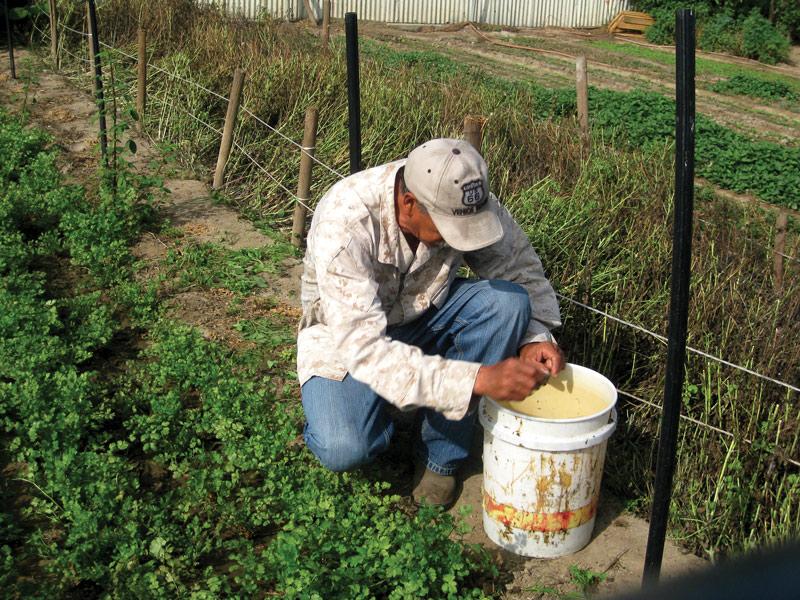
Yazmin is also a reporter for El Nuevo Sol
On this overcast Sunday morning, the father of six arrives at the garden at 6:30 a.m. and begins to clear the weeds from the rows of cilantro. The movement of his hands against the herb releases its pungent aroma.
He recalls how the vacant lots looked before they arrived and converted it into a community garden.
“It took us more than a month to fix the place,” Gamboa said. “There was trash including beds and sofas along with trees that had to be removed.”
This is not the first time Gamboa has been apart of a community garden. His family used to work at the garden on 41st Street and Alameda in South Central Los Angeles before the farmers were evicted in 2004.
“We like to garden so we came to where they let us grow food,” he said.
Gamboa is not the only one. According to the Los Angeles Community Garden Council (LACGC), a nonprofit organization that connects gardeners with vacant land to start community gardens, there are 85 current community gardens in Los Angeles County and they all have waiting lists.
James “Al” Renner, executive director of the council, said research has shown community gardens have a positive effect on people and their neighborhoods. Community gardens have been shown to increase property value, decrease crime and create community in neighborhoods, he said.
“We can’t build them fast enough to get the people in,” said Renner at the Third Annual Gathering of Community Gardens where he and LACGC received an honor from the office of the mayor for their work.
It was the LACGC, who helped Gamboa and nearly 200 families from the South Central garden start another garden in Watts.
The number of people interested in joining a garden has increased as seen by the number of people on waiting list wanting to join community gardens, Renner said.
“It’s the economy,” said Gamboa. “It’s out of necessity.”
Gamboa considers it a privilege to eat from the soil he toils and said it helps cut down on his trips to the supermarket.
But he has also found it to be beneficial for his children.
“It helps my children so they don’t lose the habit and they learn about their roots,” he said, adding that Latinos know more about agriculture.
Renner agrees with Gamboa but adds that different races have different ways of gardening.
“Hispanics are the only community that still has a collective memory of how to plant,” Renner said.
Renner believes that the increase in interest in gardening also has to do with how the White House administration has taken action in the White House.
“Michelle Obama did wonderful things for community gardens and when our leadership does something there is always a trickle down effect,” Renner said.
Gamboa said community gardens give neighborhoods a good appearance and allow the children and elders to have something to do “as a form of distraction and therapy.”
Ediojenez Lubian, 85, a native of Guerrero, Mexico is growing tomatoes, peppermint and carrots in his plot at the Stanford Avalon garden.
In the 60s, Lubian migrated to the U.S. in search of a better future. His parents, who worked in agriculture, taught him at an early age about working the land.
“I’m thankful with my parents because they taught me to work the land with my hands,” he said.




